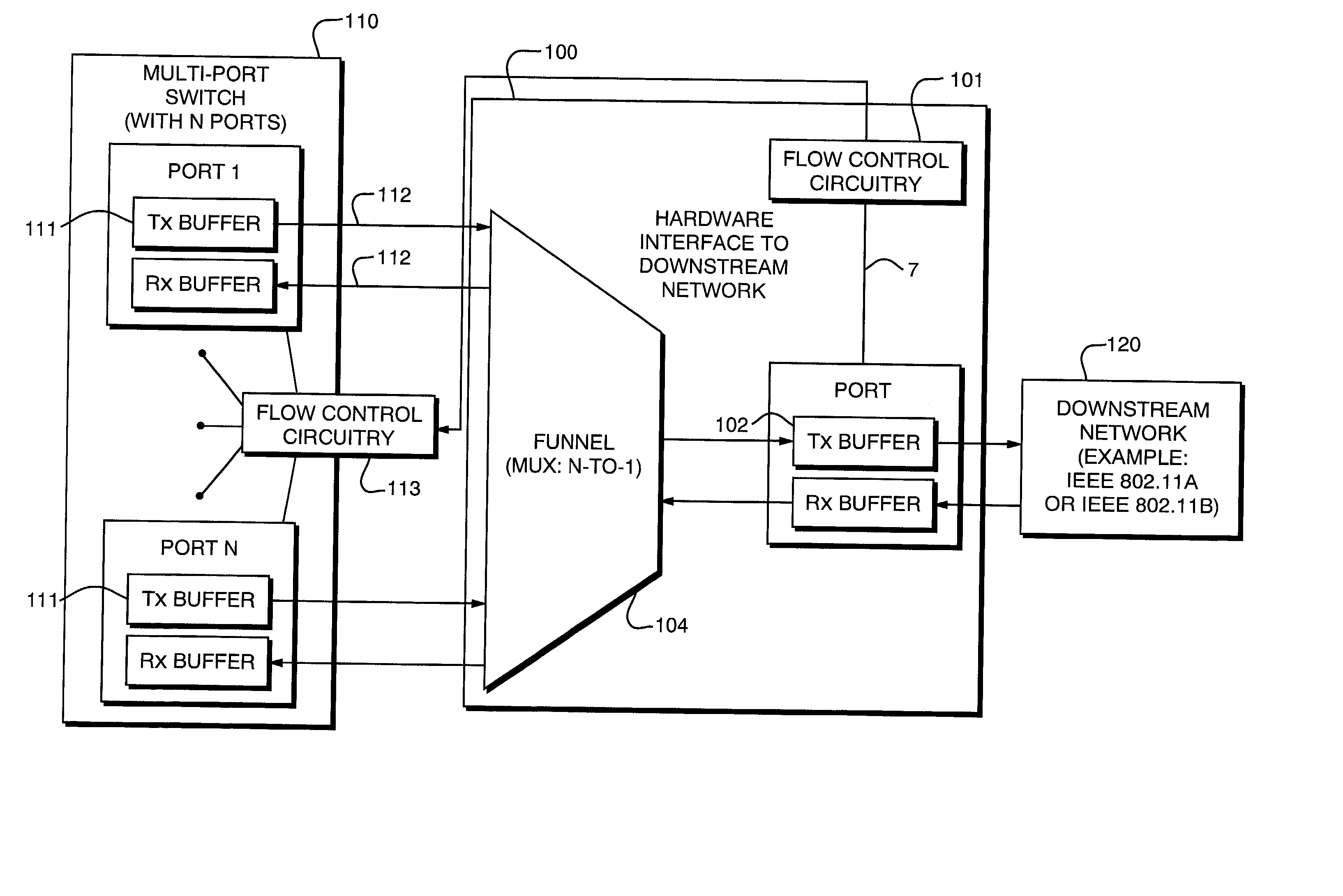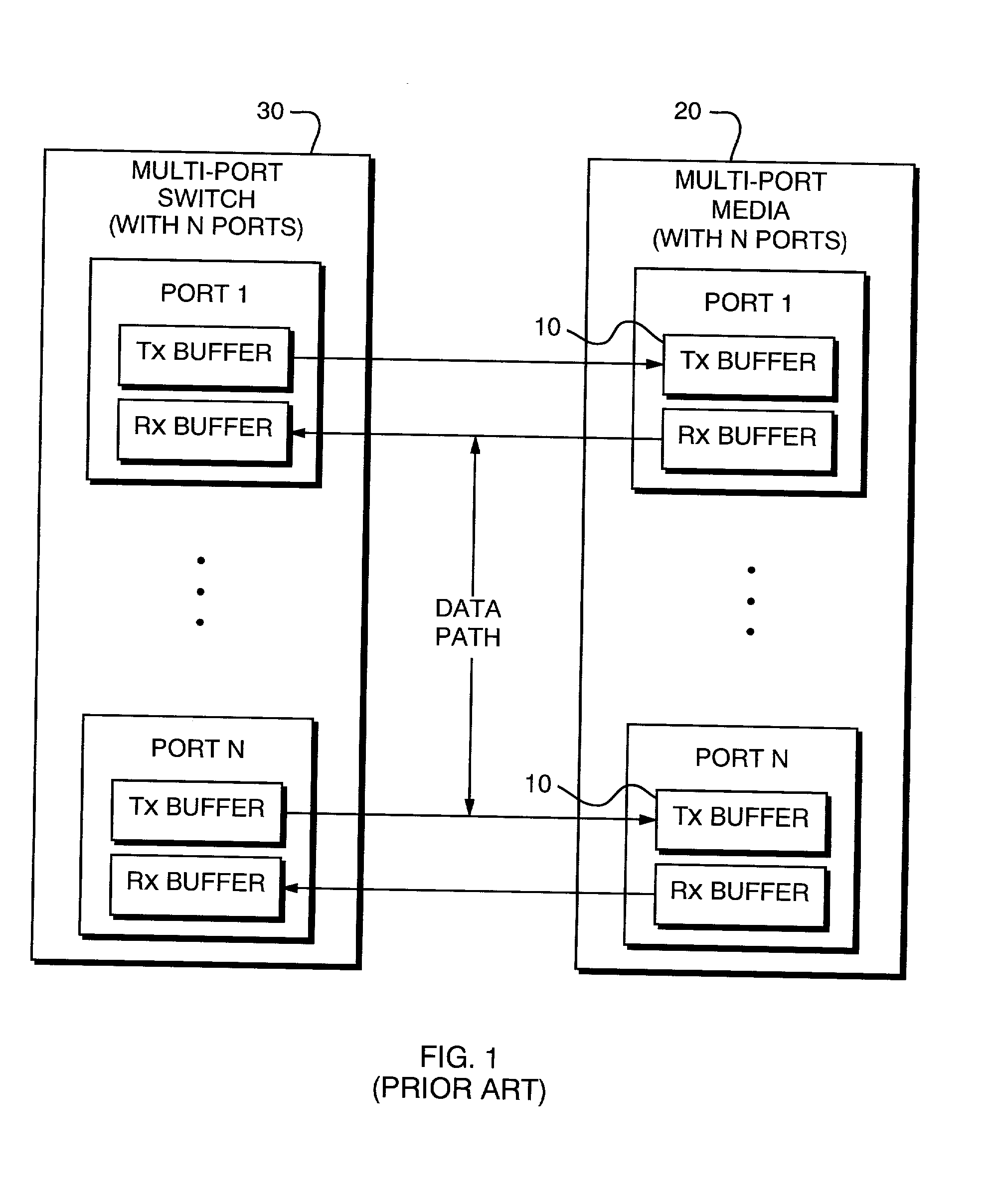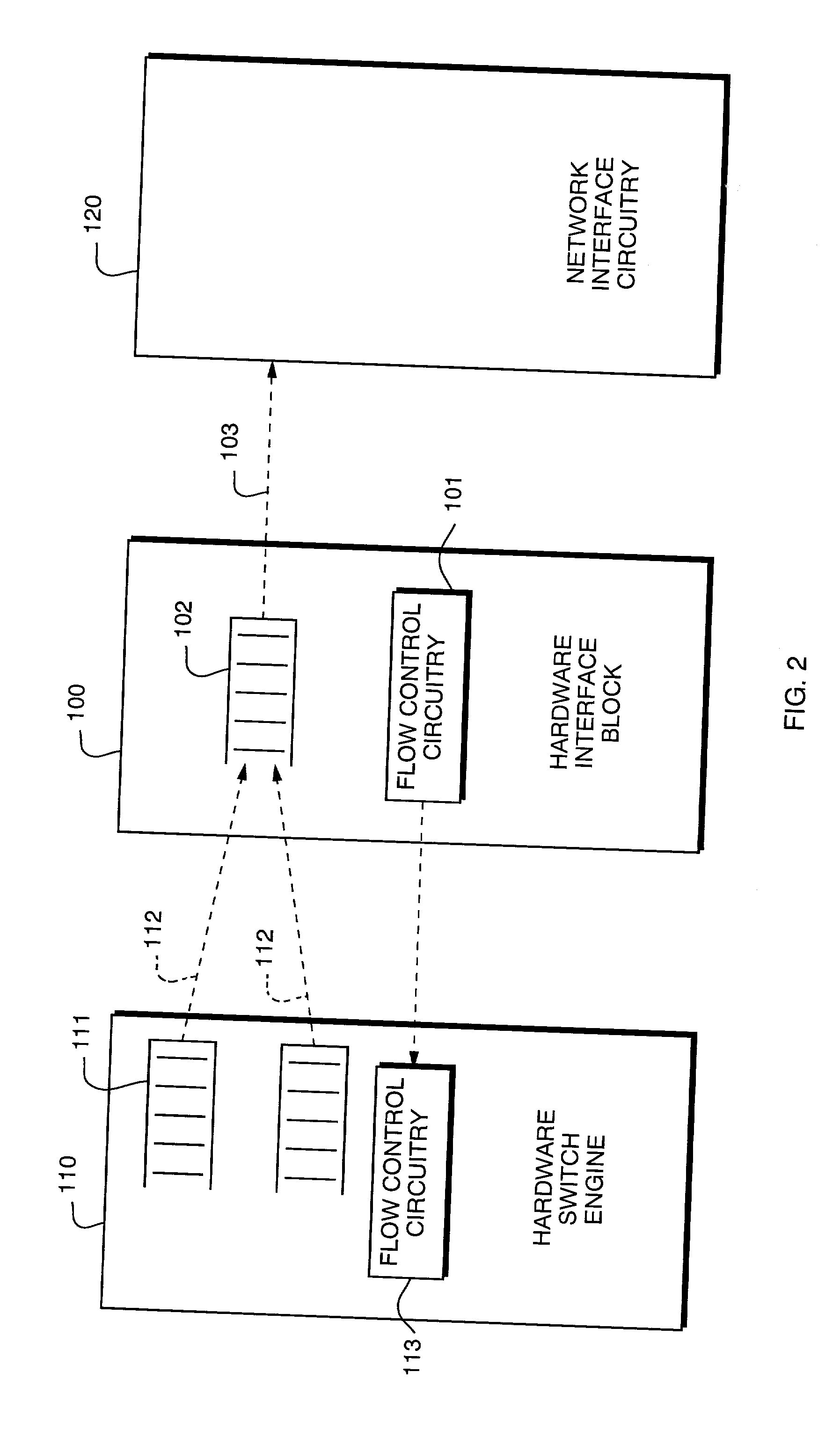Flow control system to reduce memory buffer requirements and to establish priority servicing between networks
a flow control and buffer technology, applied in the field of communication network switching, can solve problems such as signal loss, signal slowing, and inability to address all matters of real or potential importance in networks and internetworks
- Summary
- Abstract
- Description
- Claims
- Application Information
AI Technical Summary
Benefits of technology
Problems solved by technology
Method used
Image
Examples
Embodiment Construction
[0027] A flow control system 100 of the present invention is illustrated in simplified form in FIG. 2 in combination with a generic multi-port Ethernet switch engine 110 and network interface circuitry 120 that is not a multi-port device and / or does not transfer data at the same rate that the switch engine 110 does. The switch engine 110 is a common, multi-port Ethernet switch engine used to provide the basic switching functionality including packet storage buffers 111 at output transmit interface 112. An example of a representative device suitable for that purpose is the Matrix.TM. switch offered by Enterasys Networks, Inc. of Portsmouth, N.H. Those skilled in the art will recognize that the switch engine 110 may be any sort of multi-port switching device running any sort of packet switching convention, provided it includes storage buffers or interfaces with suitable storage buffers and transmit interfaces. The flow control system 100 includes flow control circuitry 101 coupled to ...
PUM
 Login to View More
Login to View More Abstract
Description
Claims
Application Information
 Login to View More
Login to View More - R&D
- Intellectual Property
- Life Sciences
- Materials
- Tech Scout
- Unparalleled Data Quality
- Higher Quality Content
- 60% Fewer Hallucinations
Browse by: Latest US Patents, China's latest patents, Technical Efficacy Thesaurus, Application Domain, Technology Topic, Popular Technical Reports.
© 2025 PatSnap. All rights reserved.Legal|Privacy policy|Modern Slavery Act Transparency Statement|Sitemap|About US| Contact US: help@patsnap.com



